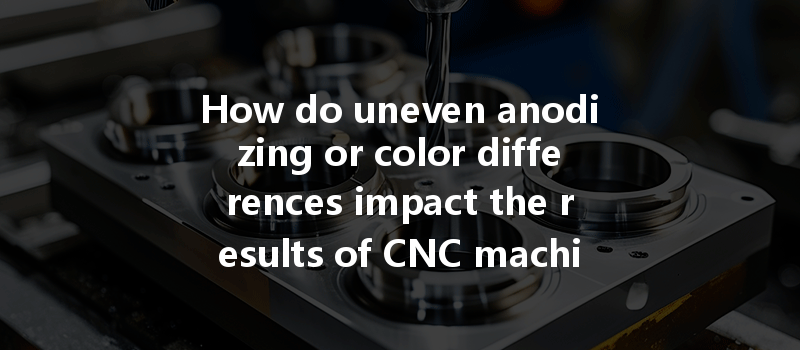Opening:
Have you ever noticed the stunning contrast in colors on a machined aluminum part? Did you know that more than 90% of aluminum components used in modern manufacturing undergo anodization? This important surface treatment not only enhances aesthetics but also improves corrosion resistance. However, uneven anodizing or color discrepancies can greatly affect the overall precision and performance of CNC machined parts. In this blog, we will dive into how these variations impact CNC machining processes and provide detailed solutions to mitigate such issues.
Understanding Anodizing and Its Importance in CNC Machining
What is Anodizing?
Anodizing is an electrochemical process that converts the metal surface into a decorative, durable, corrosion-resistant anodic oxide finish. In CNC machining, aluminum is the most commonly anodized material. The anodizing process involves immersing aluminum parts in an acid electrolytic solution and passing an electric current through it. This results in a controlled oxidation layer that can be dyed in various colors.
Why is Anodizing Important?
The importance of anodizing in CNC machining cannot be overstated. Here are some reasons:
The Impact of Uneven Anodizing on CNC Machining Results
Uneven anodizing can manifest as color mismatches across product surfaces, leading to unappealing aesthetics. This is particularly crucial in industries such as automotive or consumer electronics, where visual appearance can significantly influence marketability.
The anodizing thickness can vary in unevenly anodized parts, leading to inconsistencies in surface hardness and corrosion resistance. A part that requires high tolerances may not perform well if the anodized layer is thinner in some areas.
When parts are anodized unevenly, they may not fit properly during assembly. This can lead to improper sealing, loose fit, or even part failure in critical applications.
Uneven anodizing complicates quality control processes. Parts that look fine to the naked eye may have hidden imperfections, leading to failures down the line which can be costly in terms of both rework and reputation.
Analyzing the Causes of Uneven Anodizing
Understanding the root causes of uneven anodizing can help manufacturers implement corrective measures. Here are some common factors:
The preparation of the aluminum surface before anodizing plays a critical role. If the surface is not cleaned or etched properly, the anodizing process will result in uneven layers.
The anodizing process requires a consistent electrical current. Fluctuations can lead to variations in the anodizing thickness.

The chemical composition of the anodizing bath can affect the results. Variations in acidity or temperature may result in uneven anodization.
Complex geometries can create shadows or blockages in the anodizing bath, leading to uneven coating thickness.
Solutions to Mitigate Uneven Anodizing
To combat uneven anodizing, it’s crucial to enhance surface preparation techniques. Implementing robust cleaning and etching protocols ensures that the aluminum surface is free from contaminants, allowing for a uniform anodizing layer.
Using advanced equipment that can maintain steady electrical current and voltage will lead to a more uniform anodizing layer. Regularly auditing and calibrating your equipment can help achieve this goal.
Implementing a stringent monitoring program for the anodizing bath can help maintain desired parameters. Keeping record logs for bath chemistry, including pH and temperature, can foster a consistent environment for anodizing.
Custom fixtures can be designed to hold the parts in a position that minimizes shadows and ensures complete immersion in the anodizing bath. This can significantly improve the evenness of the anodizing process.
Introducing quality control measures like periodic inspections, thickness measurements, and color matching tests before and after anodization can help in catching potential issues before they evolve into challenges.
Addressing Color Differences Post-Anodizing
For organizations involved in complex anodizing processes, color calibration techniques can help predict potential differences. This is particularly effective when dealing with dyed anodized surfaces.
If parts have already been anodized and exhibit color differences, potential solutions include secondary treatments like re-anodizing or applying an external coating to achieve color uniformity.
Educating staff about the anodizing process can lead to better practices and adherence to specifications. Regular training sessions can substantially minimize errors during the anodizing process.
The impact of uneven anodizing and color differences on CNC machining results is profound. From affecting the aesthetics and performance of parts to complicating quality control measures, the implications are significant. However, by understanding the root causes of these issues and implementing robust solutions, manufacturers can enhance their anodizing processes and ensure successful CNC machining outcomes.
Ultimately, the insights shared in this blog serve a dual purpose: they highlight the critical role anodizing plays in CNC machining while providing actionable strategies to overcome challenges. As CNC technology continues to evolve, manufacturers must remain vigilant and proactive in optimizing their processes for improved quality and consistency.
In a world where precise engineering and impeccable aesthetics often define success, ensuring a uniform anodizing process is not just an advantage but a necessity. Reflect on the challenges posed by uneven anodizing and consider the significance of refining your approach for lasting benefits in your CNC machining endeavors.






